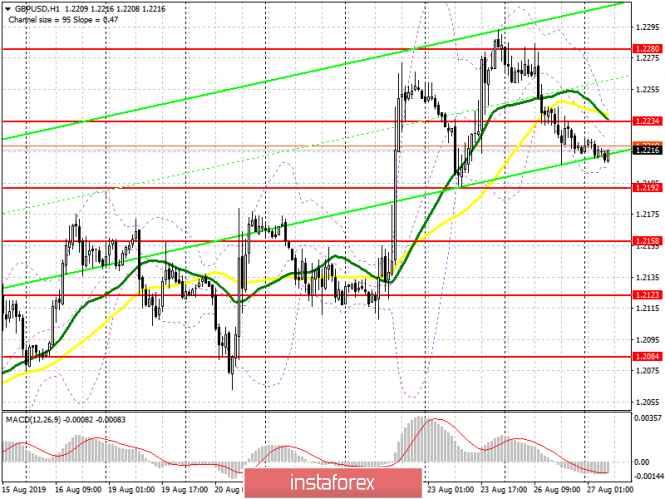To open long positions on GBP/USD you need:
Yesterday, after a good report on orders for durable goods in the US, buyers of the pound did not manage to return to the resistance level of 1.2234, and now it is time to do it. To maintain an upward trend, bulls need to consolidate above 1.2234, which will lead to an update of the highs of 1.2280 and 1.2334, where I recommend taking profits. However, a further larger upward trend is unlikely to be possible without good news under the Brexit agreement. In case the pair further declines, support will be provided by the level of 1.2192, however, it is best to open long positions immediately on the rebound from the larger area of 1.2158, where bulls will try to build a new lower boundary for the upward trend.
To open short positions on GBP/USD you need:
As yesterday, bears will try to maintain the level of 1.2234, and the formation of a false breakdown there will allow the pair to remain in the short-term downward channel, which will lead to a decrease in GBP/USD to the low of 1.2192, where I recommend taking profit. However, a more important task for sellers will be the test of the low of 1.2158, which will determine the further bullish trend in the pair, which we have been observing since mid-August. If the pound grows above the resistance of 1.2234 in the morning, it is best to open short positions after updating the high of 1.2280, or, when there is good news on Brexit, to rebound from a larger level of 1.2334.
Signals of indicators:
Moving averages
Trading is conducted below 30 and 50 moving averages, which indicates a likely change in trend.
Bollinger bands
If the pound rises, the upside potential will be limited by the upper border of the indicator in the region of 1.2234. A break of the lower boundary at 1.2210 will increase pressure on the British pound.

Description of indicators
- MA (moving average) 50 days - yellow
- MA (moving average) 30 days - green
- MACD: Fast EMA 12, Slow EMA 26, SMA 9
- Bollinger Bands 20
